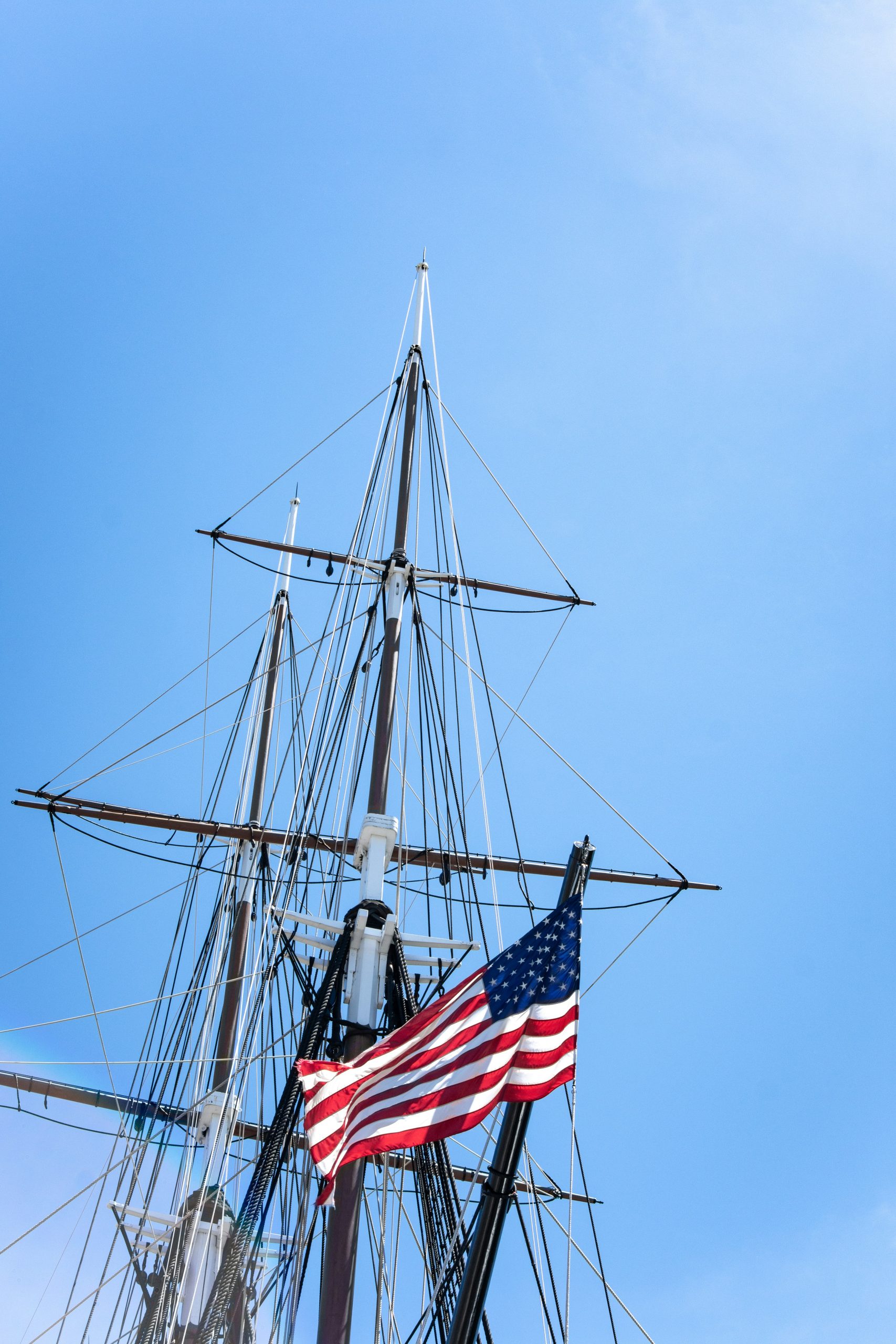
As early as the 15th Century, bells were used to sound the time onboard a ship. (Time, in those days, was kept with an hourglass).
The bell was rung every half hour of the 4 hour watch. A 24 hour day was divided into six 4 hour watches, except the dog watch (16:00 – 20:00 hours) which could be divided into two 2 hour watches to allow for the taking of the evening meal.
When the Bells were rung
| Middle Watch | Midnight to 4 AM (0000 – 0400) |
| Morning Watch | 4 AM to 8 AM (0400 – 0800) |
| Forenoon Watch | 8 AM to Noon (0800 – 1200) |
| Afternoon Watch | Noon to 4 PM (1200 – 1600) |
| First Dog Watch | 4 PM to 6 PM (1600 – 1800) |
| Second Dog Watch | 6 PM to 8 PM (1800 – 2000) |
| First Watch | 8 PM to Midnight (2000 – 0000) |
How they Sound
The bells were struck for every half-hour of each watch, with a maximum of eight bells. For instance, during the Middle Watch you would hear the following:
00:30 1 bell would ring
01:00 2 bells would ring
01:30 2 bells, pause, 1 bell
02:00 2 bells, pause, 2 bells
02:30 2 bells, pause, 2 bells, pause, 1 bell
03:00 2 bells, pause, 2 bells, pause, 2 bells
03:30 2 bells, pause, 2 bells, pause, 2 bells, pause, 1 bell
04:00 2 bells, pause, 2 bells, pause, 2 bells, pause, 2 bells
At eight bells your watch was over! All other 4 hour watches followed this same procedure except the Dog Watches.
At the end of the First Dog Watch, only four bells were struck, and the Second Dog Watch bells were struck like this: 6:30 PM, one bell; 7 PM two bells; 7:30 PM, three bells; and at 8 PM, eight bells. Confused? Well, bells aren’t used as much as before, but its still a good way to identify time while at sea.
Dog Watch
For those wondering, a dog watch (Dogwatch Definition & Meaning – Merriam-Webster) was originally referred to the night-watch on ships — that is, the time when (on land) all but the dogs were asleep. The name is also said to be derived from Sirius, the “Dog Star”, on the claim that Sirius was the first star that can be seen at night.